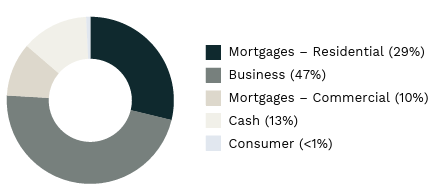10 top-performing Australian fixed interest funds of FY25
Australian fixed interest investors just enjoyed their strongest year since 2018/19, with the Bloomberg AusBond Composite 0+ Yr climbing 6.81% in FY25, its best result since the 9.6% gain six years ago.
But some managers didn’t just ride the bond rally – they crushed it. The top performers read the cycle early, added meaningful alpha, and posted returns north of 7%. A few even nudged 10%, staying well ahead of the index not just this year, but consistently over multiple years.
In this wire, we share the scorecard of the top 10 domestic bond funds of FY25 and take a closer look at three of the standout names.
The FY25 scorecard
| Rank | Fund Name | Return |
|---|---|---|
| 1 | Manning Monthly Income Fund | 9.40% |
| 2 | Realm Strategic Income Fund - Enduring Units | 9.31% |
| 3 | Yarra Higher Income Fund | 8.61% |
| 4 | Metrics Direct Income Fund | 8.44% |
| 5 | Yarra Australian Bond Fund | 8.17% |
| 6 | Yarra Enhanced Income Fund | 8.09% |
| 7 | Janus Henderson Sustainable Credit Fund | 7.96% |
| 8 | Realm High Income - Wholesale Units (Soft Closed) | 7.87% |
| 9 | PIMCO Australian Bond Fund | 7.83% |
| 10 | Janus Henderson Australian Fixed Interest Fund | 7.71% |
We’ve focused on the top two performers for their standout results and long-term track records, and included PIMCO’s flagship Australian Bond Fund to ensure a large-cap, core-bond strategy was represented.
Manning Monthly Income Fund – discipline pays off

The Manning Monthly Income Fund aims to deliver net returns 5% above the RBA cash rate over rolling five-year periods by investing primarily in asset-backed securities and diversified credit. It has achieved that objective, returning 9.24% p.a. over five years, courtesy of a rigorous process that avoids driving up risks to chase yields.
Josh Manning, founder of Manning Asset Management, said FY25 presented one of the toughest credit environments in years.
“We are at the most challenging point in the cycle as a credit investor. We have a period where credit spreads have been compressed, as well as the outlook having a range of different risks,” he noted in the fund’s Q1 update, when geopolitical tensions drove volatility in markets.
Crucially, Manning stressed that the team refused to stretch for yield and was avoiding "inferior deals".
“It’s very important that discipline in the investment process prevails – a clear focus point for our investment committee, which reviews investment decisions monthly," he said.
The fund has avoided consumer loans entirely, citing concerns around cost-of-living pressures, and is instead focussing on the mortgage market and loans to businesses.

Yarra Higher Income Fund – exploiting opportunities as they arise

The Yarra Higher Income Fund invests across high-yielding, investment-grade fixed income securities, with a tilt toward private debt and syndicated loans, which remain less volatile than publicly traded credit. The strategy has paid off, delivering 8.12% p.a. over five years.
In its May update, Yarra highlighted that the fund had been taking advantage of opportunities in the RMBS/ABS market, where spreads have been recovering since April following the volatility caused by Trump's Liberation Day.
In a recent interview with Livewire's Tom Stelzer, portfolio manager Phil Strano explained how the team is balancing opportunity with risk:
“The beauty of this market right now is that over a 12-month period is incredibly improbable that you'll see [negative returns] purely because running yields are so high, but also our ability to limit drawdowns through our strategic use of interest rate duration when it makes sense to do so," Strano said.

PIMCO Australian Bond Fund – core bonds are back in favour

While boutiques dominated the top of the table, larger active managers also impressed. The PIMCO Australian Bond Fund, which invests across a broad mix of high-quality Australian and New Zealand bonds, returned 7.83% in FY25 and has outperformed the benchmark over five years (0.40% p.a. vs -0.22%).
In a recent update, portfolio manager Rob Mead said the current environment remains attractive for core bond investors:
“While central banks have started cutting rates, yield curves have actually steepened, which means that starting yields today remain attractive. So something like high fours to even potentially north of 6% as a starting yield, which is again a really good indicator for the potential returns going forward," he said.
He added that despite equity markets looking “fair to expensive,” the window for deploying capital into core bonds “remains well and truly open.”
PIMCO expects 2–3 further RBA rate cuts as inflation stabilises within the target band, echoing views shared by Yarra. Earlier this year, portfolio manager Adam Bowe outlined the “Magnificent Seven” reasons why core bonds should shine in 2025.
Australian fixed income returned

How we compiled these lists
Our performance data is sourced from Morningstar, and the funds listed are available on Livewire’s Find Funds menu (located in the top-right corner of the webpage). Please note that this is not an exhaustive list of all Australian fixed income funds available in the market.
Here’s how we filtered the results:
- Fund Type: Managed Fund
- Asset Class: Fixed Income - Australian
We then manually refined the list based on 1-year returns.
NOTE: While it is an interesting exercise to examine fund performance over a one-year period, most funds recommend minimum investment periods of five years or more. As such, it would be worthwhile to consider longer-term performance across cycles when researching funds or making investment decisions. Past performance is not a reliable indicator of future return.
1 topic
10 funds mentioned
1 contributor mentioned

